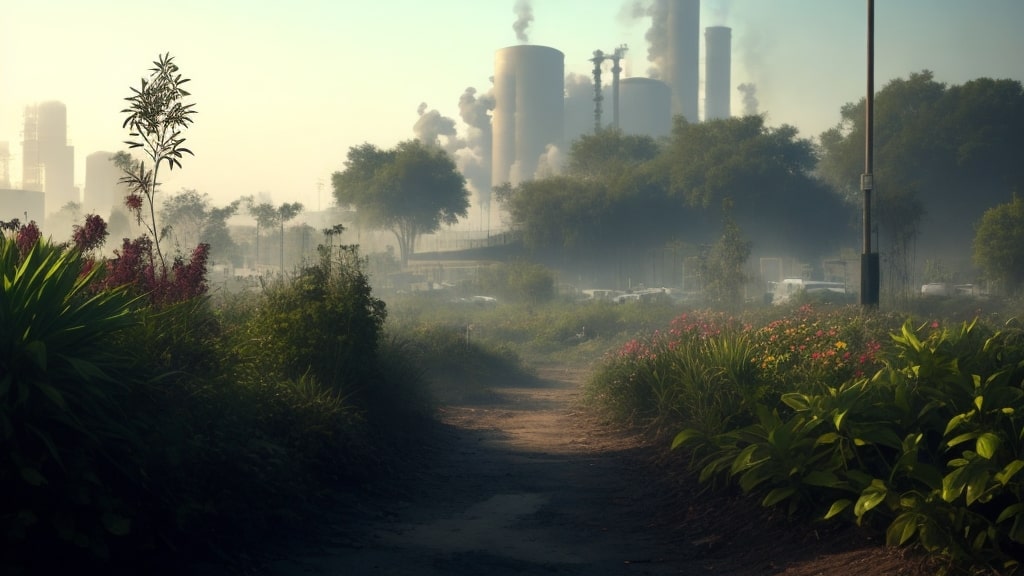
A man got out of bed, washed his face, drank coffee, and bought a bottle of water on the way to the subway. Doesn't seem like anything bad for nature happened? Not at all! The carbon footprint grows as we buy groceries, cook food, and use public or private transport - and these emissions should not be underestimated. Here's a look at what our carbon footprint is, how to calculate it, and what everyone can do to prevent a global catastrophe.
What emissions are related to the carbon footprint?
In short, the carbon footprint is all the greenhouse gases (including carbon dioxide, methane and others) that an individual, organization or product directly or indirectly creates. For example, when we drive or ride the bus to work, turn on the lights in our room, or simply scroll through social media, there is a certain amount of emissions behind each of these actions.
These gases are not particularly dangerous, and some are even necessary for life, but their accumulation in the atmosphere leads to the greenhouse effect. The greater our carbon footprint, the greater our global ecological disaster: because greenhouse gases increase the temperature of the planet, fires, floods, and droughts occur in many regions.
So far, according to the UN climate group, we are not doing a very good job of avoiding catastrophe: the average temperature on Earth continues to rise, and human influence is obvious. For example, researchers from the World Weather Attribution group were able to confirm that the terrible heat wave that swept the west coast of North America in June 2021 was the result of human activity.
What carbon footprint does each of us leave behind?
The carbon footprint consists of two notional parts: direct and indirect emissions. The first are what any particular plant produces directly, burning different fuels and electricity. And the second is everything that happens afterwards, while the goods are being transported, stored, sold, and so on.
It is difficult for residents of developed and developing countries to imagine how much greenhouse gases they produce. For example, it is difficult for us to calculate how much of them are formed before any food goes into the refrigerator, how much emission is released into the atmosphere during the production and transportation of this or that equipment. Even video conferencing in Zoom and watching videos creates a carbon footprint - and a very noticeable one. For example, an hour-long call with the camera turned on emits up to 1 kilogram of carbon dioxide into the atmosphere, the researchers calculate.
However, it is still possible to roughly estimate your personal carbon footprint, and there are various online calculators for this purpose. For example, Carbon Footprint allows you to calculate a household's carbon footprint: you need to find out how much electricity and gas you spend at home. There you can also estimate how much greenhouse gases are released into the atmosphere when you use your private car, fly on planes, ride trains and take public transport.
What are the most harmful industries?
- 25% Electricity and heat production: Burning coal, gas, and oil to heat and light our cities produces the most greenhouse gases.
- 24% Agriculture: livestock production, growing crops, tilling land, and clearing forests for arable land all emit large amounts of greenhouse gases.
- 21% Industry: industrial greenhouse gases enter the atmosphere not only during fuel combustion, but also as a result of chemical reactions, metallurgical processes, processing of minerals and waste.
- 14% Transportation: virtually all of the world's transportation still runs on gasoline and diesel fuel, so all cars, ships, trains, and planes produce huge amounts of CO2.
Among countries, China is the leader in CO2 emissions, with the United States in second place.
What can you personally do to help the planet?
We should be more careful about our consumption, drive less if we can, and buy more local products. The longer it takes for a product to reach the consumer, the greater its carbon footprint. It may be worthwhile to reduce meat consumption, since this is the industry that produces the most greenhouse gases of all agriculture. But it's important to realize that meat bought from local producers is likely to have a smaller carbon footprint than, for example, mangoes imported from other countries.
And you should also be more conscious of your purchases and replace disposables with reusables. The less unnecessary things you buy, the smaller your carbon footprint will be. It's worth paying attention to manufacturers' labels: companies that are committed to reducing greenhouse gas production often declare it on the label.